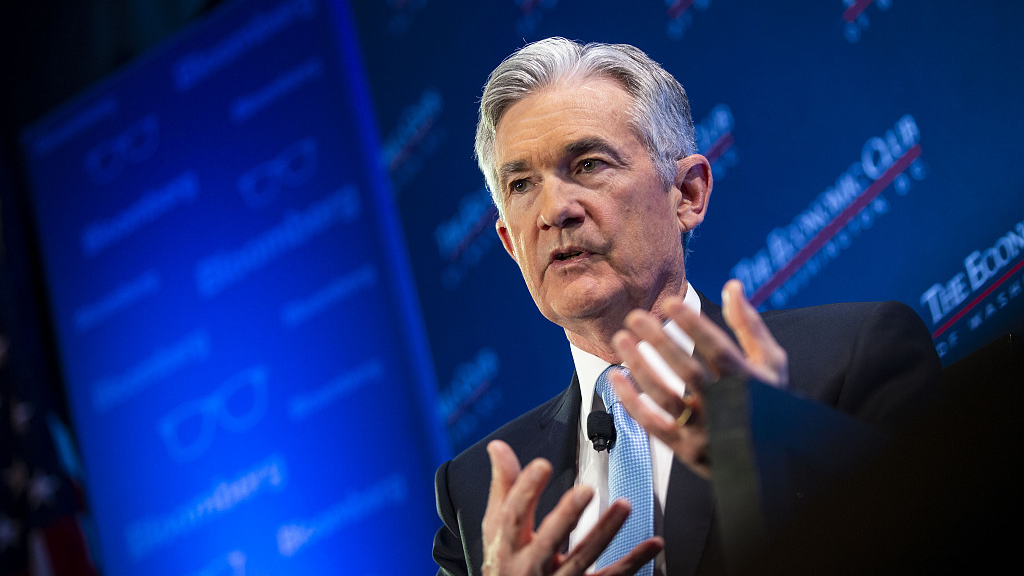
Shoppers at a supermarket in California, the U.S., April 12, 2022. /CFP
Shoppers at a supermarket in California, the U.S., April 12, 2022. /CFP
Editor's note: Guo Lihua is a professor of School of Economics, Central University for Nationalities. The article reflects the author's opinions and not necessarily the views of CGTN.
Since 1945, the U.S. has experienced 12 recessions. Currently, expectations of a recession caused by interest rate hikes have been forming and made a profound impact on global asset price formation.
Although the Fed has been on an interest rate hike cycle since March 2022, U.S. CPI reached a forty-year high record of 9.1 percent in June, 2022 and fell back to 7.7 percent in October, but inflation is still running at a high level.
The causes of this round of inflation are more about "supply-driven" characteristics. Under the impact of the Russia-Ukraine war on international commodities and other energy prices, the price of core commodities such as automobiles and other international supply chain disruptions have increased the cost of imports; the rapid repair of the service sector in the late epidemic has increased the labor market gap, forming a "spiral rise between wages and commodity prices," together fueling the formation of cost-push inflation.
At present, with several rounds of large-scale fiscal stimulus, the dominant factor of inflation gradually shifted from the supply side to the demand side, and the characteristics of demand-pull inflation have gradually emerged.
From the beginning of March to the present, in order to fight inflation, the Federal Reserve has opened the fastest wave of interest rate hikes since 1980. As of November, the Fed has raised rates by a cumulative 375 basis points (bp) since March and the federal funds rate has been raised to 3.75 to 4 percent.
The effect of the rate hike is clear, and it's not a good time for the general public. The Philadelphia Fed manufacturing employment index plummeted to 7.1 percent in November from 28.1 percent previously, indicating that the labor market is cooling fast. In September, total personal savings in the U.S. decreased 59.29 percent year-over-year and has been growing negatively for 18 consecutive months.
Nonetheless, as interest rate hikes advance and mortgage rates rise, the pressure on the general public to pay variable mortgage rates increases. As evidenced by the income and expenditure situation, consumption could see a more significant recession in the first quarter of 2023.
Investment indicators are also not good, in the third quarter of 2022, the U.S. construction investment and residential investment growth rate have dropped to -11.36 percent and -12.74 percent, respectively. Although the U.S. GDP has risen in the third quarter from negative to positive territory due to the net export drive, the depression of personal consumption, real estate and other industries in the high interest rate environment, investment shrinkage, and economic downturn was inevitable.

Fed Chairman Jerome Powell /VCG
Fed Chairman Jerome Powell /VCG
In terms of the external environment, the world economy is facing many challenges, with the COVID-19 pandemic continuing. The regional situation is volatile, the financial environment is deteriorating, and countries are having a hard time. On October 11, the IMF released its World Economic Outlook report, which forecasts that global economic growth will slow to 2.7 percent in 2023, down 0.2 percentage points from the July forecast. Against the backdrop of a global recession, the U.S. is not alone.
It is still too early to conclude that the U.S. is about to enter a deep recession. On November 16, the U.S. Department of Commerce data showed that adjusted retail sales rose 1.27 percent in October from a year earlier, the highest level since February this year.
On August 16, the U.S. Congress passed the Inflation Reduction Act, which allocates funds for energy security and climate investments, as well as subsidizing the Affordable Care Act, which could restructure the industry through government spending and paving the way for economic recovery.
For some time to come, tightening expectations may be correct, but the specific means are worth discussing. Successive sharp interest rate hikes have brought some effect, but the composite CPI growth rate in October is still at a 7.7 percent high position, which is still left some distance from the Fed's regulatory target of 2 percent rate for inflation. The inflation issue is still the core decision basis of the current Fed.
During the Fed's interest rate resolution meeting in early November, Fed Chairperson Jerome Powell called on to stand adhere to tightening policy until the inflation target is reached. Facing all such uncertainties, the U.S. choosing to continue on with raising interest rates is questionable. Amid a slowdown in rate hikes, a tighter monetary and fiscal policy could be the next step.
(If you want to contribute and have specific expertise, please contact us at opinions@cgtn.com. Follow @thouse_opinions on Twitter to discover the latest commentaries on CGTN Opinion Section.)